海月水母和一群无刺的黄金水母,印度尼西亚 Moon jelly and an aggregation of stingless golden jellyfish in a landlocked marine lake, Raja Ampat, West Papua, Indonesia (© Alex Mustard/Minden Pictures)
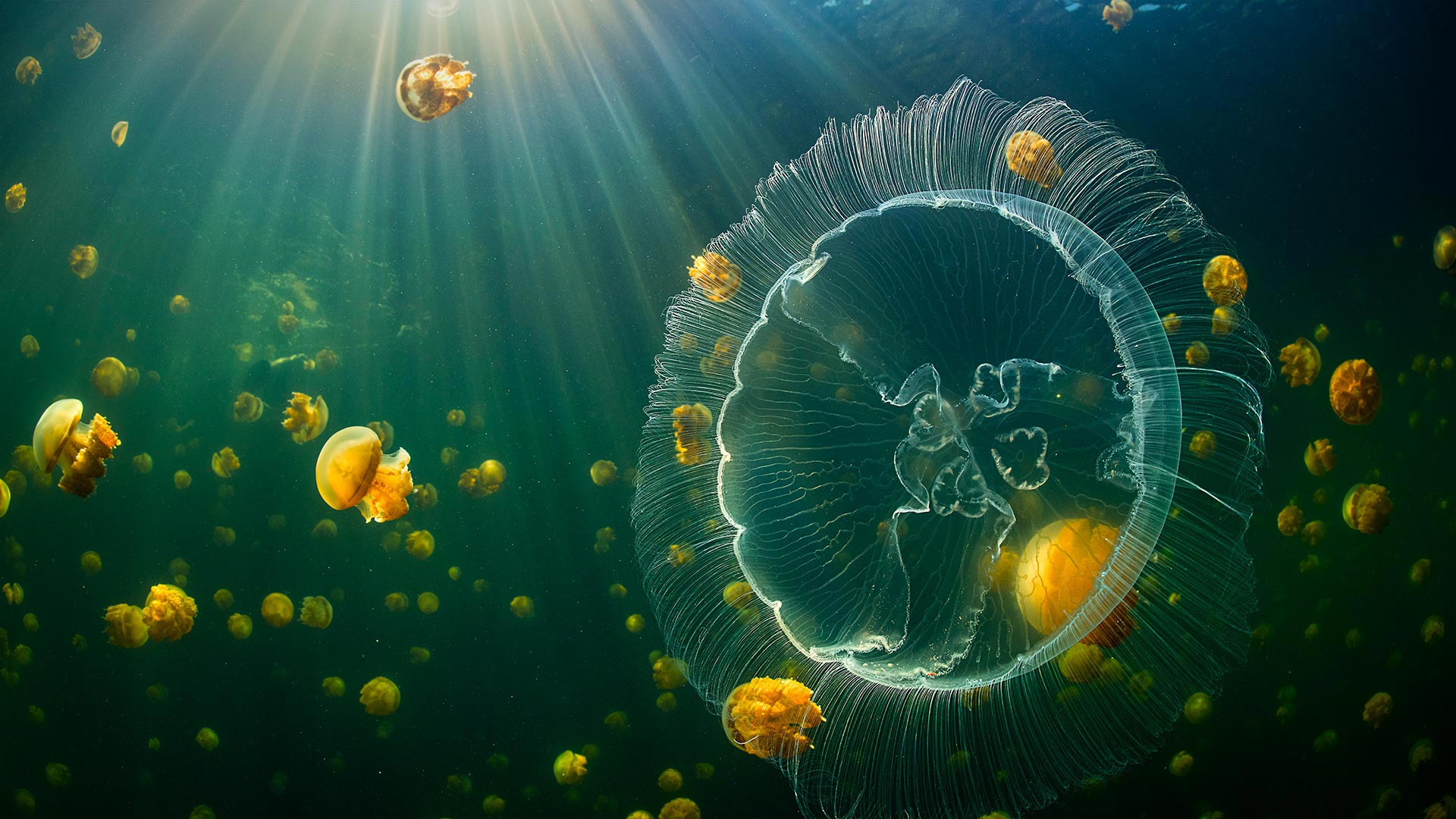
海月水母和一群无刺的黄金水母,印度尼西亚 Moon jelly and an aggregation of stingless golden jellyfish in a landlocked marine lake, Raja Ampat, West Papua, Indonesia (© Alex Mustard/Minden Pictures)
World Jellyfish Day
Today we're celebrating World Jellyfish Day—even though these creatures are best described as otherworldly. Despite their alien qualities (not to mention their inability to vocalize), jellyfish have a lot to say to us about the history of life on Earth.
For example, species like the moon jelly and smaller golden jellies in our picture possess primitive eyes that only detect the presence of light, like the nourishing sunbeams they're chasing here. But some of their cousins, like the box jellyfish, boast several complex eyes with corneas and retinas. These differences help biologists understand how the human eye evolved to process such dazzling spectacles as the jellyfish's delicate dance.
世界水母日
今天我们要庆祝世界水母日,尽管这些生物被形容为超凡脱俗的。尽管水母有着异族的特质(更不用说它们不会发声),但它们对地球上的生命史有着很多的看法。
例如,在我们的照片中,像月亮果冻和较小的金色果冻这样的物种拥有原始的眼睛,它们只能探测到光线的存在,就像它们在这里追逐的滋养阳光一样。但是他们的一些表亲,比如盒子水母,拥有几只复杂的眼睛,有角膜和视网膜。这些差异有助于生物学家了解人类眼睛是如何进化来处理水母微妙的舞蹈等令人眼花缭乱的景象的。
瓦卡托比国家公园,印度尼西亚 Wakatobi National Park, Indonesia (© Fabio Lamanna/Alamy)
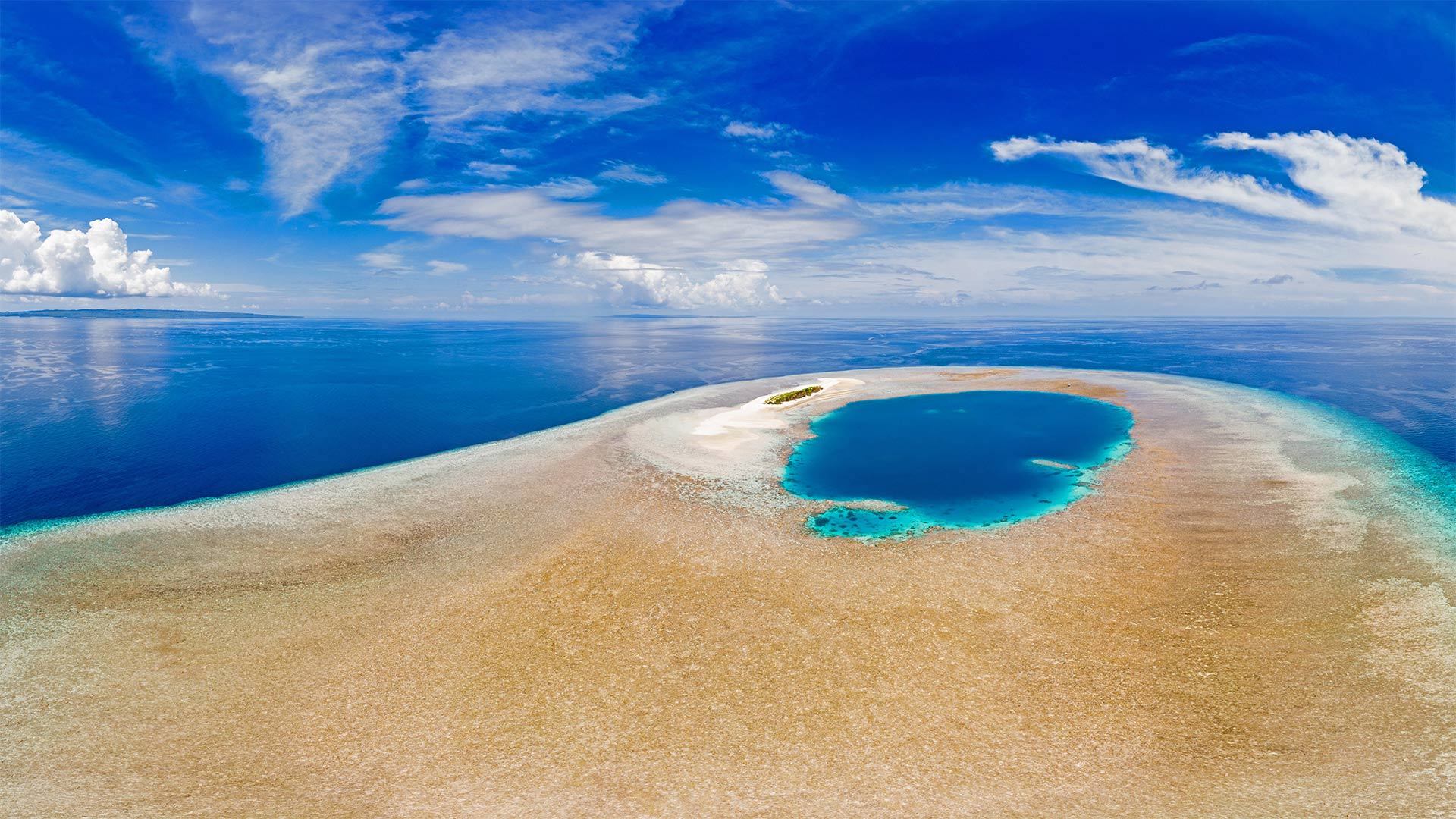
瓦卡托比国家公园,印度尼西亚 Wakatobi National Park, Indonesia (© Fabio Lamanna/Alamy)
Diving into the 'underwater nirvana'
Indonesia's Wakatobi National Park protects one of the most diverse underwater environments in the world. Around 400 species of coral are found in these pristine waters, and they're home to a staggering variety of marine life, including dolphins, whales, turtles, and hundreds of species of fish. The park was established in 2002, preserving more than 5,000 square miles, most of which is covered by coral reefs. In fact, the barrier reef here is second in size only to the Great Barrier Reef and is so full of life that famed oceanographer and explorer Jacques Cousteau is said to have called it an 'underwater nirvana.' Many others have followed in Cousteau's wake, and Wakatobi has become a preeminent destination for diving and snorkeling.
潜入“水下涅盘”
印尼的瓦卡托比国家公园保护着世界上最多样化的水下环境之一。在这些原始水域中发现了大约400种珊瑚,它们是各种海洋生物的家园,包括海豚、鲸鱼、海龟和数百种鱼类。该公园成立于2002年,保护面积超过5000平方英里,其中大部分被珊瑚礁覆盖。事实上,这里的大堡礁面积仅次于大堡礁,充满了生命,据说著名的海洋学家和探险家雅克·库斯托(Jacques Cousteau)将其称为“水下涅磐”。许多其他人跟随库斯托,瓦卡托比已成为潜水和浮潜的卓越目的地。
乌布德格拉朗梯田,印度尼西亚巴厘岛 Tegalalang Rice Terraces, Ubud, Bali, Indonesia (© Michele Falzone/Alamy)
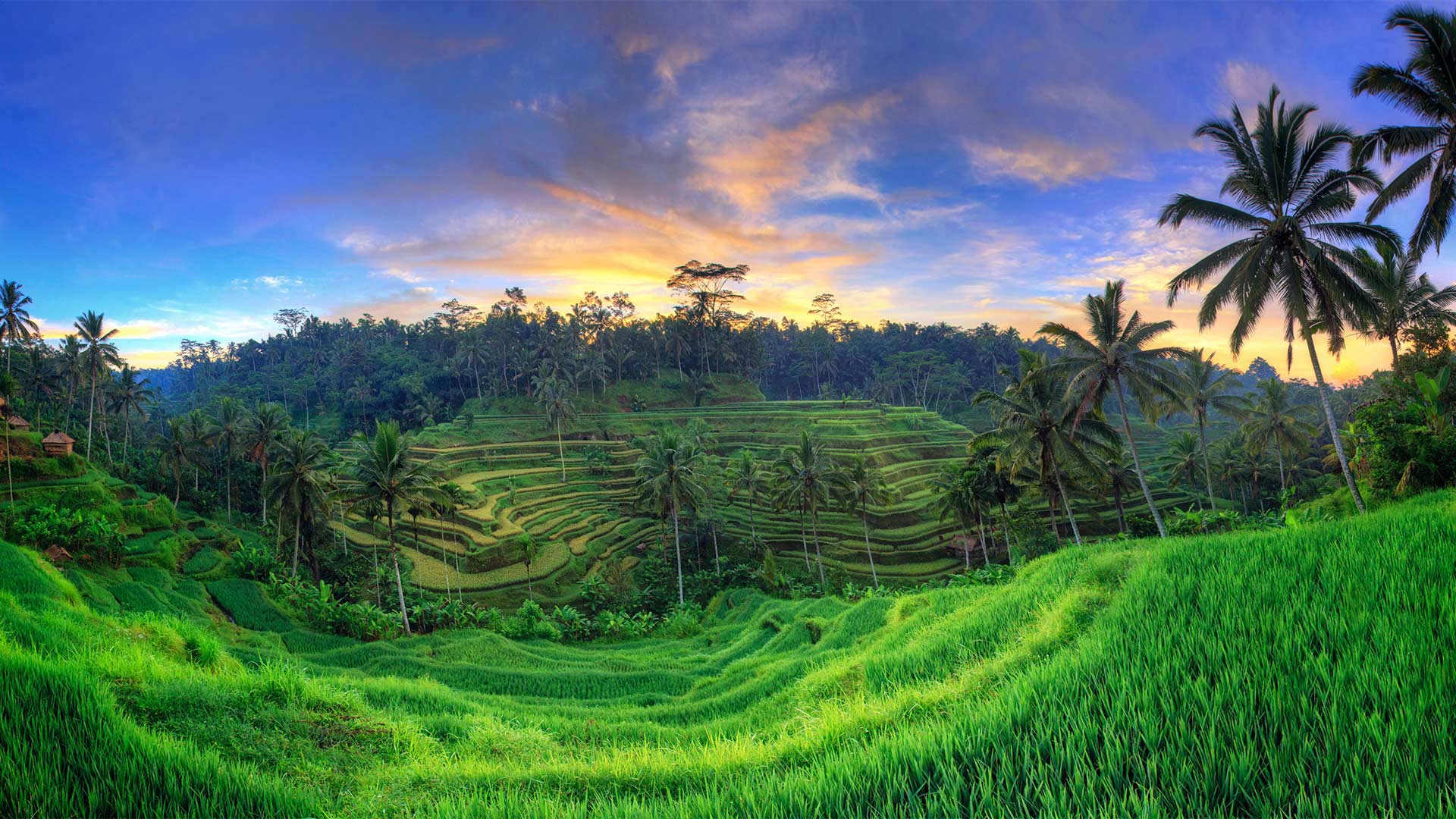
乌布德格拉朗梯田,印度尼西亚巴厘岛 Tegalalang Rice Terraces, Ubud, Bali, Indonesia (© Michele Falzone/Alamy)
Terraced fields of green
Twice a year, all of Bali, Indonesia—including those who live and work in the lush, green rice terraces you see here—join together to celebrate the country's most important holiday, Galungan. This 10-day Balinese-Hindu milestone always comes at the end of the traditional 210-day Balinese calendar, usually in March or April, and then again in September or October.
This spring, the festivities began on April 14, and on that day the Balinese invited the spirits of their ancient ancestors into their homes with prayers and other offerings draped from bamboo poles called penjor, which seem to be erected everywhere. Planted in the ground at individual homes or along the sides of roads and decorated with coconut leaves and flowers, penjor are used to hang offerings as a kind gesture towards the spirits. The tenth and final day of Galungan is called Kuningan, which comes on April 24 this year. To mark this finale, a specially prepared yellow rice will be offered to the departing ancestors, a gift to accompany them on their return journey to the spirit world.
绿色梯田
每年两次,印度尼西亚巴厘岛—包括那些住在这里绿油的梯田里生活和工作的人—一起庆祝这个国家最重要的节日,加尔隆根。这10天的巴厘印度教里程碑总是在传统的210天巴厘历的结束,通常是在3月或4月,然后在9月或10月再次出现。
今年春天,节日从4月14日开始,那天巴厘人邀请他们古老祖先的灵魂们到他们的家里,祈祷和其他祭品都是用竹竿做成的,这些竹竿上挂着,这些祭品似乎到处都是竖立的。彭若尔种植在单独的家里或道路的两侧,用椰子叶和鲜花装饰,用来悬挂祭品,作为对灵魂的一种亲切的姿态。高龙根的第十天也是最后一天,叫做昆ingan,今年4月24日。为了纪念这一结局,将向离世的祖先赠送一份特制的黄米,作为陪伴他们返回精神世界的礼物。
拉贾安帕特群岛中的瓦亚格岛,印度尼西亚 Wayag Island at Raja Ampat, Indonesia (© Amazing Aerial Agency/Offset by Shutterstock)
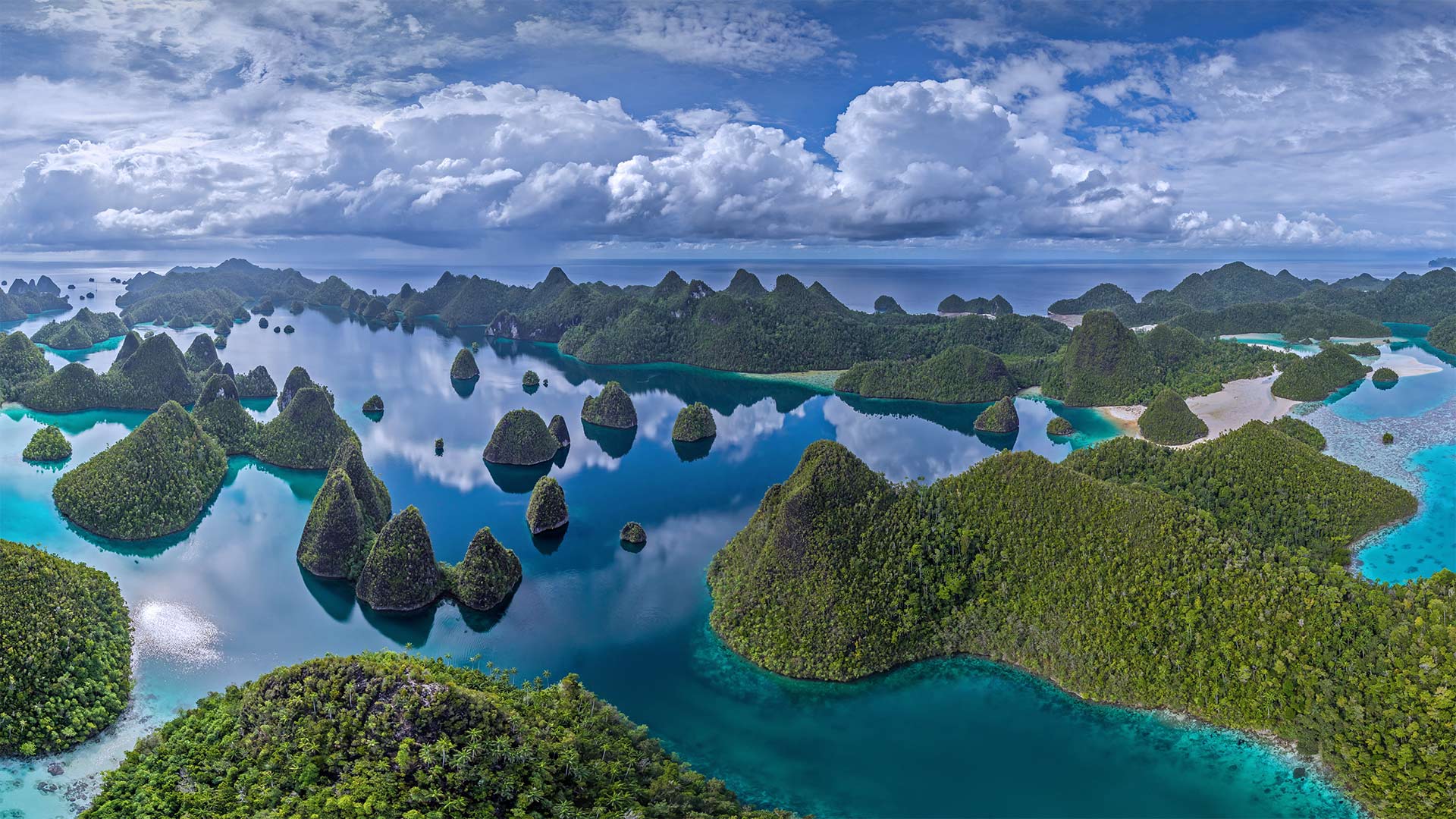
拉贾安帕特群岛中的瓦亚格岛,印度尼西亚 Wayag Island at Raja Ampat, Indonesia (© Amazing Aerial Agency/Offset by Shutterstock)
Paradise, found
If your dream is to experience a tropical paradise that's still largely untouched by people, you could do worse than a trip to Wayag Island, seen here. It's part of the Raja Ampat district in the province of West Papua, Indonesia. Most of the roughly 50,000 inhabitants of this district live on or around its four main islands, Batanta, Misool, Salawati and Waigeo. The remainder of Raja Ampat is made up of roughly 1,500 smaller islands, cays, and shoals–astonishingly, hundreds of these tiny islands have yet to be explored by humans.
Divers and snorkelers, especially, treasure Raja Ampat and its vast and diverse reef system, which is considered one of the most biodiverse places in the world. Located roughly seven miles above the equator, Raja Ampat covers nearly 10 million acres of land and sea, and is home to 540 types of corals, more than 1,000 types of coral reef fish, 700 types of mollusks, and a variety of warm-blooded marine animals like the dugong. The ecosystem, which is part of a larger tropical ocean area called the Coral Triangle, is so diverse it's sometimes referred to as the 'the Amazon of the seas.'
天堂,找到了
如果你的梦想是去体验一个热带天堂,那里基本上还没有被人接触过,你可能会比去瓦亚格岛旅行更糟糕,如图所示。它是印度尼西亚西巴布亚省拉贾安帕特区的一部分。这个地区大约5万居民中的大多数居住在巴坦塔岛、米苏尔岛、萨拉瓦蒂岛和怀吉岛四个主要岛屿上或附近。拉贾安帕特的其余部分由大约1500个较小的岛屿、珊瑚礁和浅滩组成——令人惊讶的是,数百个这些小岛还没有被人类探索过。
潜水员和潜水者,尤其是珍宝拉贾安帕特及其广阔多样的珊瑚礁系统,被认为是世界上生物多样性最丰富的地方之一。Raja Ampat位于赤道上方约7英里处,占地近1000万英亩,是540种珊瑚、1000多种珊瑚礁鱼类、700多种软体动物以及儒艮等多种温血海洋动物的家园。这个生态系统是一个被称为珊瑚三角洲的更大的热带海洋区域的一部分,其多样性使它有时被称为“海洋亚马逊”
弗洛勒斯岛上的纳闽巴霍,印度尼西亚科莫多国家公园 Komodo National Park, Labuan Bajo, Flores, Indonesia (© Thrithot/Adobe Stock)
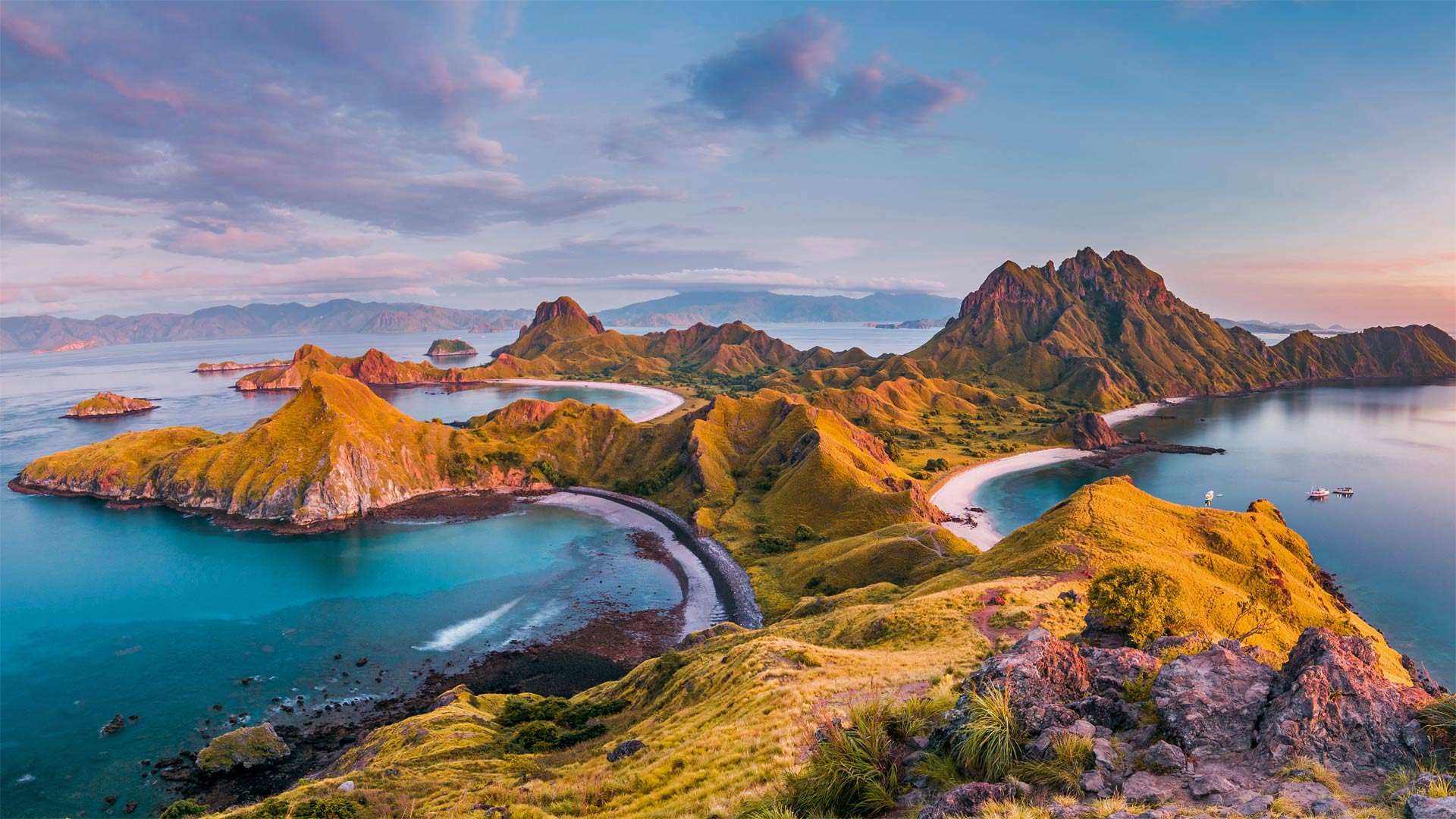
弗洛勒斯岛上的纳闽巴霍,印度尼西亚科莫多国家公园 Komodo National Park, Labuan Bajo, Flores, Indonesia (© Thrithot/Adobe Stock)
Here there be dragons
Welcome to Komodo National Park, founded in 1980 to protect the Komodo dragon—a monitor lizard that evolved in this insular environment to be much larger-'scale' than its fellows. Found only on the islands we see here—Komodo and Padar—and a handful of others nearby, it's the biggest lizard walking the Earth today. Not only walking but sprinting: Since adult Komodo dragons often prey on swift Timor deer, you'll sometimes see a dragon in a dead sprint after its would-be dinner, reaching up to 13 miles an hour.
这里有龙
欢迎来到科莫多国家公园,该公园成立于1980年,旨在保护科莫多巨蜥——一种在这个岛屿环境中进化的巨蜥,其“规模”要比同类大得多。只在我们看到的科莫多岛和帕达尔岛以及附近的其他一些岛屿上发现,它是今天地球上行走的最大的蜥蜴。不仅是步行,而且是短跑:由于成年科莫多龙经常捕食速度很快的帝汶鹿,你有时会看到一条龙在吃过晚餐后,以每小时13英里的速度在死气沉沉地短跑。
努沙杜瓦海岸与防波堤,印度尼西亚巴厘岛 Nusa Dua coast with breakwater, Bali, Indonesia (© Dkart/Getty Images)
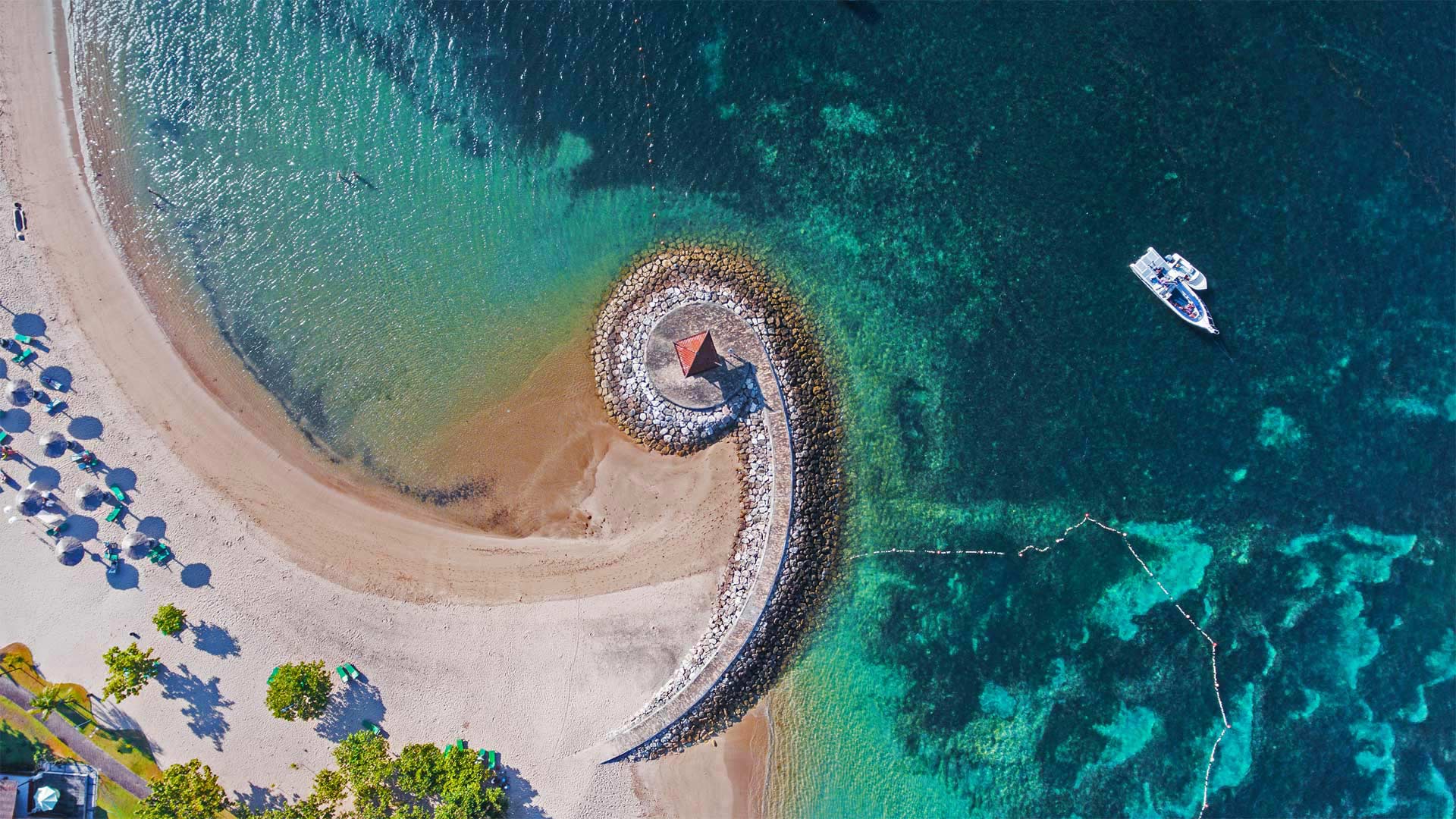
努沙杜瓦海岸与防波堤,印度尼西亚巴厘岛 Nusa Dua coast with breakwater, Bali, Indonesia (© Dkart/Getty Images)
The most wonderful day of the year. Period.
Er, comma—at least it seems like that's what we're seeing. And just like a comma breaks up a sentence, this structure called a breakwater interrupts the Pacific Ocean, punctuating waves with a crash before they can disturb this Bali beach. Whether its resemblance to a comma (or is that an apostrophe?) was intentional or not, it's a fine visual for today's syntactical celebration. That's correct: It's Grammar Day! (Note to hardline grammarians: We know punctuation—like a comma—isn't exactly grammar, but we're loosening the linguistical reins a bit in the generous spirit of Grammar Day. So put that red pen down, smartypants.)
If you're not inclined to decline verbs or dying to diagram a sentence, don't quit reading just yet. You might just think of grammar as the dos and don'ts taught in English textbooks—but a mere stuffy set of rules it ain't. Grammar is the ingredients of a language. Whenever we speak or even think, whether with prim-and-proper diction or in the most teacher-defying slang, our brains are using grammatical rules to translate firing neurons into words and phrases. Just how this happens is still a hot debate for linguists: Are these rules based on hardwired neural pathways or are they learned from a young age?
Well, however the brain works, we hope you brought yours today. Our quiz covers those wonderful, nitpicky grammar rules from school you doubtless remember so well. Sharpen your pencils!
一年中最美好的一天。句号。
呃,至少我们看到的是逗号。就像一个逗号打断了一个句子,这个被称为防波堤的结构打断了太平洋,在海浪冲击巴厘岛海滩之前,它以撞击声打断了海浪。它是否像逗号(或是撇号?)不管是有意还是无意,这都是今天句法庆祝的一个很好的视觉效果。没错,今天是语法日!(强硬派语法学家注意:我们知道像逗号这样的标点符号并不完全是语法,但我们在语法日的慷慨精神下稍微放松了对语言的控制。所以把那支红笔放下,聪明人。)
如果你不想拒绝动词,也不想画一个句子,那就暂时不要放弃阅读。你可能只是认为语法是英语课本上教的应该做的事和不应该做的事,但它不是一套乏味的规则。语法是语言的组成部分。每当我们说话或思考的时候,无论是用朴素得体的措辞,还是用最蔑视老师的俚语,我们的大脑都在利用语法规则将兴奋的神经元翻译成单词和短语。这究竟是如何发生的,对语言学家来说仍然是一个热门的争论:这些规则是基于硬连线的神经通路,还是从小就学会的?
好吧,不管大脑是怎么工作的,我们希望你今天能带上你的。我们的测验涵盖了学校里那些美妙的、挑剔的语法规则,你肯定记得很清楚。把你的铅笔削尖!
中爪哇省的婆罗浮屠,印度尼西亚 Borobudur in Central Java, Indonesia (© Oleh Slobodeniuk/Getty Images)
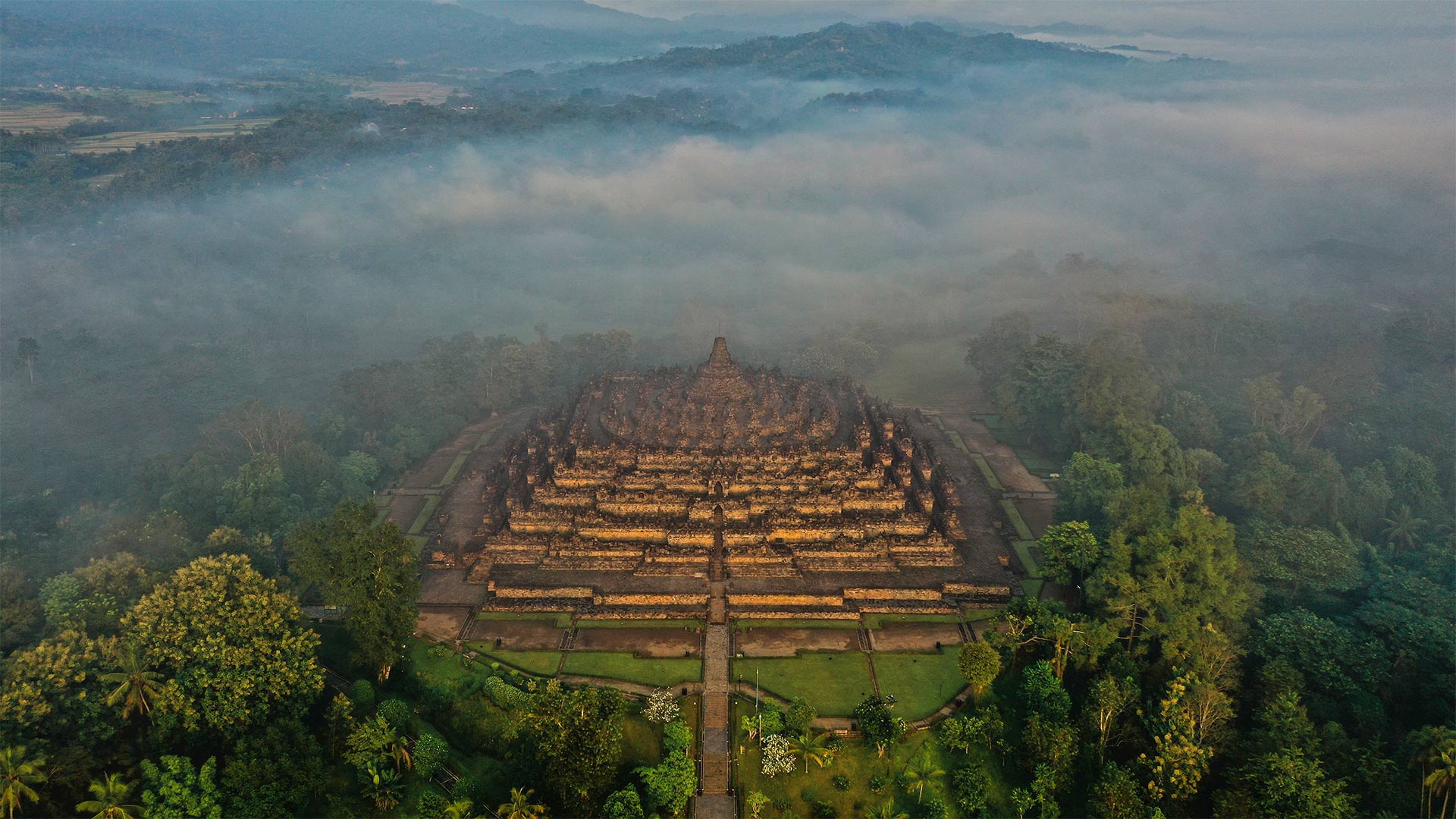
中爪哇省的婆罗浮屠,印度尼西亚 Borobudur in Central Java, Indonesia (© Oleh Slobodeniuk/Getty Images)
A giant relic in Java
This photo shows the quiet, mist-shrouded wilderness surrounding the Buddhist temple known as Borobudur. The site is among the most-visited attractions on the island of Java, with devout practitioners making pilgrimages to the holy site and curious tourists coming to see the grandeur of the structure. With 504 Buddha statues and 2,672 sculpted relief panels, Borobudur was likely constructed in the 9th century and abandoned in the 14th as much of the Indonesian population converted from Buddhism and Hinduism to Islam.
Over time it became engulfed by the jungle, and only locals knew of its existence. In the early 1800s, the occupying British administration learned of the temple and sent a Dutch engineer and 200 workers to cut down trees, burn vegetation, and dig away the earth to reveal the monument. Borobudur was eventually restored and given preservation status under UNESCO guidelines.
Life in the nearby town of Muntilan and other Indonesian locales will be even more active than usual on August 17, as that date is Indonesia's Independence Day. The nation of islands at the crossroads of the Indian and Pacific oceans declared independence in 1945 and made the date a national holiday eight years later. The people of Indonesia were freeing themselves from three centuries of Dutch rule.
以阿贡火山为背景Sidemen山谷中的稻田,印度尼西亚巴厘岛 Rice fields in the Sidemen Valley, with Mount Agung in the background, Bali, Indonesia (© Jon Arnold/Danita Delimont)
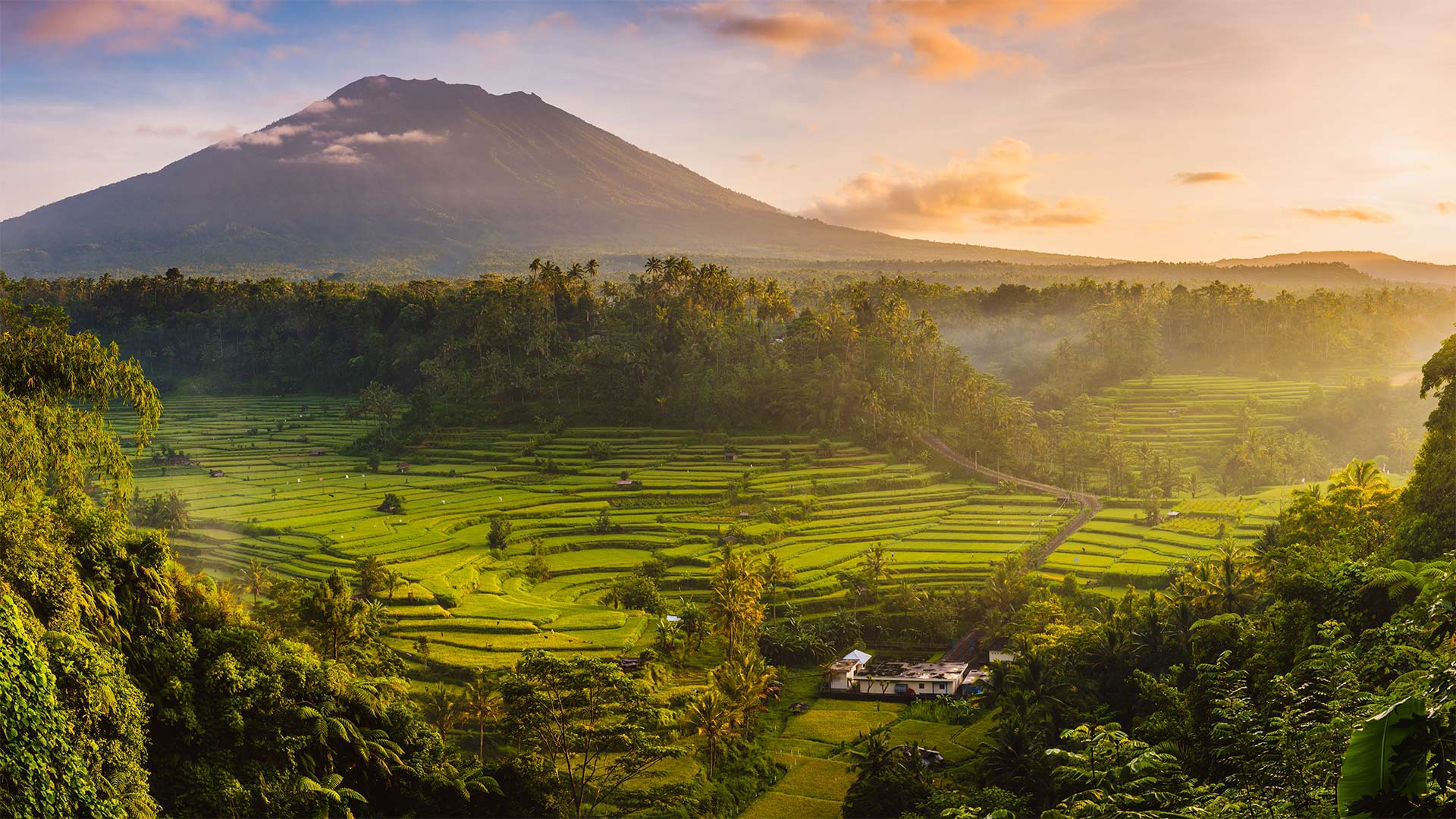
以阿贡火山为背景Sidemen山谷中的稻田,印度尼西亚巴厘岛 Rice fields in the Sidemen Valley, with Mount Agung in the background, Bali, Indonesia (© Jon Arnold/Danita Delimont)
Green fields of grain
We're looking down on the lush fields of the Sidemen Valley, sitting in the shadow of Bali's tallest mountain, Mount Agung. In May, this Indonesian province marks the end of the harvest season of a key staple—rice. Towns and villages are decorated with colorful flags, and farmers erect shrines to Dewi Sri, the rice goddess. Small, handmade straw dolls depicting the goddess are left here and there in further tribute. Before 'social distancing' entered the global vocabulary, people came together to share traditional food and indulge in fun and games, like water buffalo races through the streets. This year, to be sure, the celebrations will be more subdued, more private, though the gratitude for a bountiful harvest, we suspect, just as deeply felt.
Tegallalang terrace farms in Ubud, Bali, Indonesia (© gorgeoussab/Shutterstock)
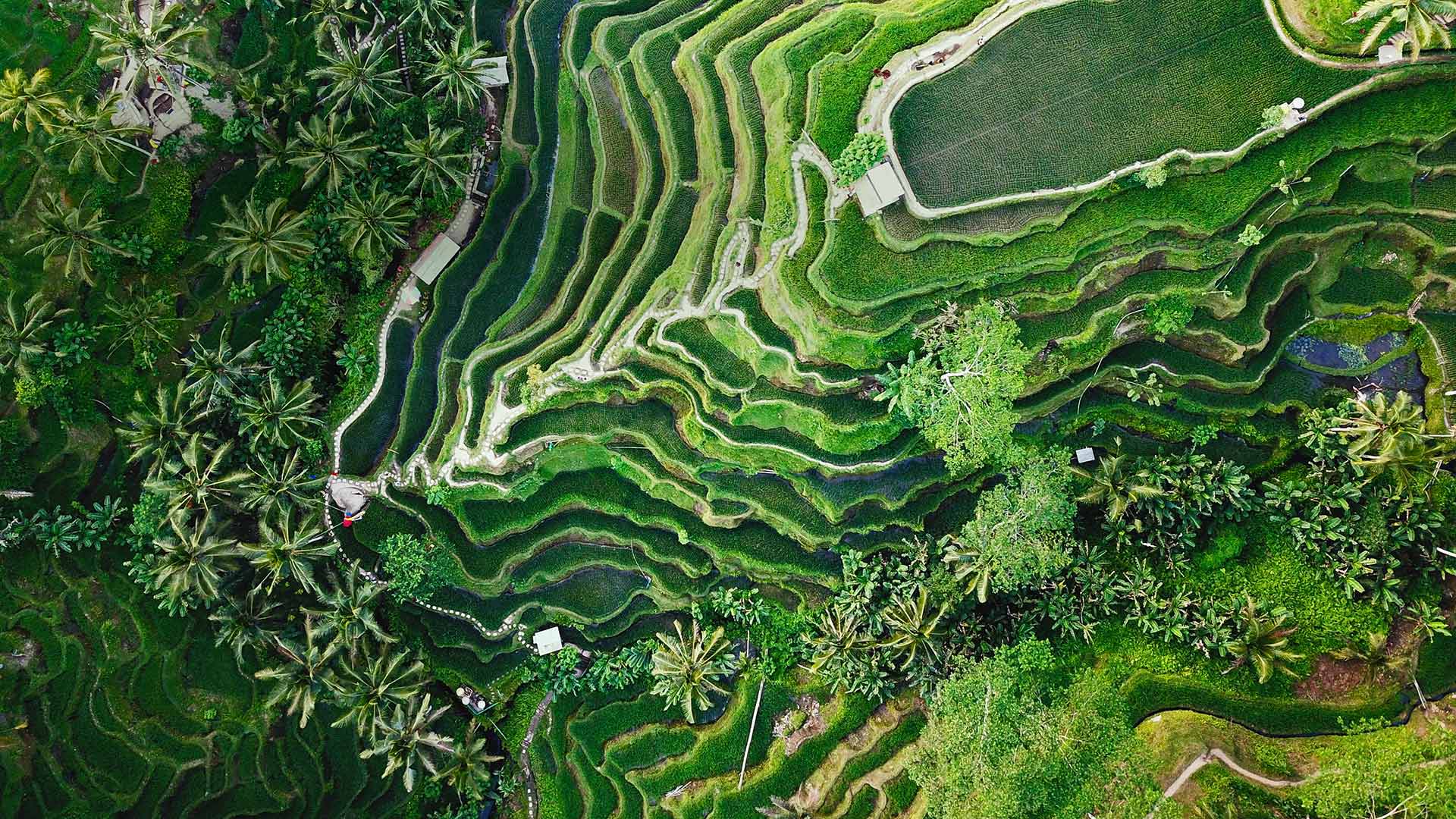
Tegallalang terrace farms in Ubud, Bali, Indonesia (© gorgeoussab/Shutterstock)
A lush, green escape
With the tourist season winding down and rainy season still forthcoming, September is an ideal time to visit Bali. If you’re lucky enough to go, plan a daytrip to the Tegallalang farming terraces in Ubud, where visitors can capture gorgeous photos of the landscape and get a unique glimpse into Balinese culture. The island of Bali has a rich tradition of agriculture, with an especially unique method of water management for rice farming. The irrigation system here, known as Subak, is recognized by UNESCO for its cultural significance. Water flows through temples and into the rice paddies, carved into the hillsides like steps. It's a tradition that dates back thousands of years, based on the Balinese philosophical principle of Tri Hita Karana, which refers to a relationship between humans, the earth, and the gods.
苏门答腊海岸正在喷发的喀拉喀托火山,印度尼西亚 Anak Krakatoa volcano erupting of the coast of Sumatra, Indonesia (© Martin Rietze/Alamy)
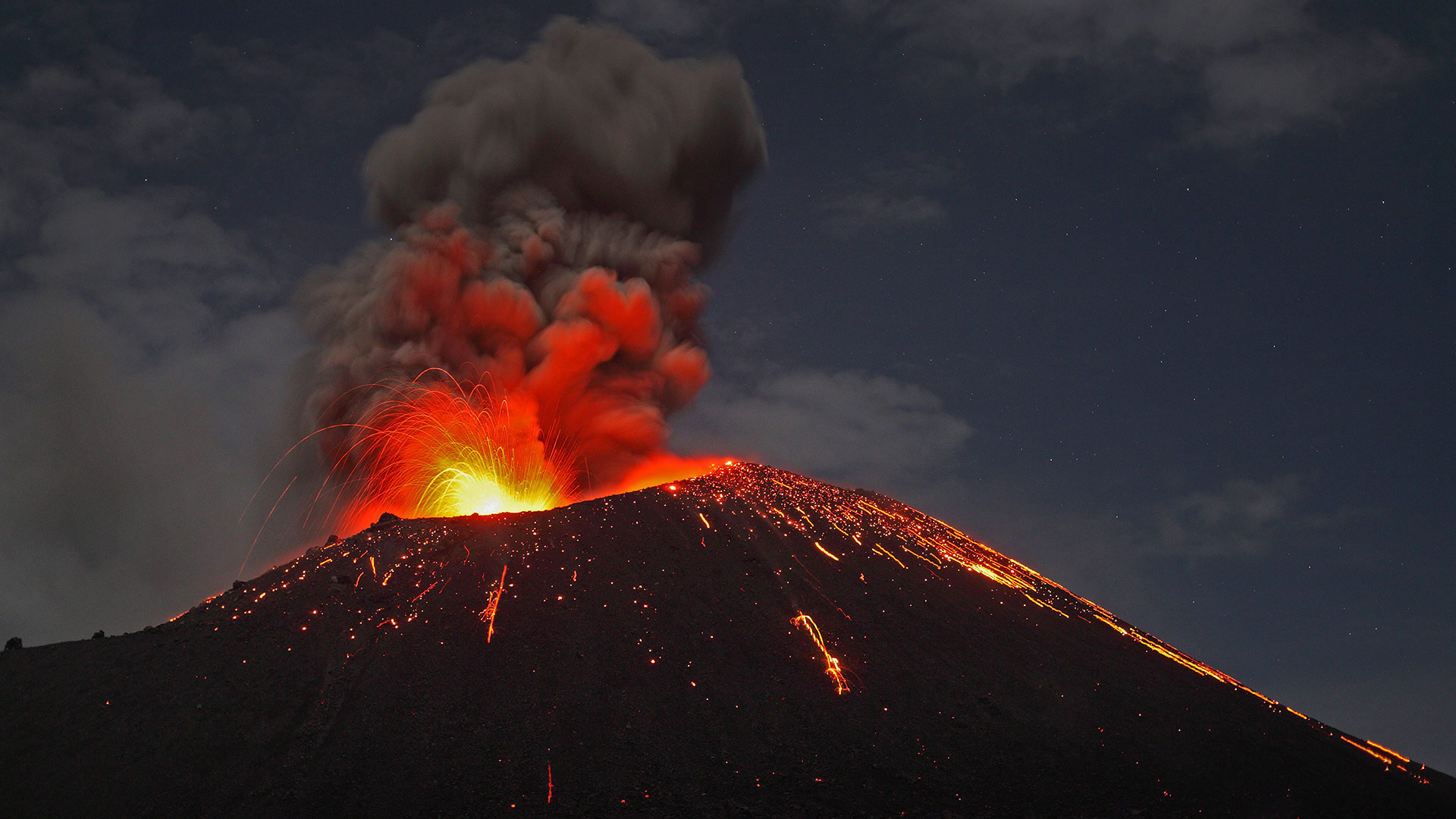
苏门答腊海岸正在喷发的喀拉喀托火山,印度尼西亚 Anak Krakatoa volcano erupting of the coast of Sumatra, Indonesia (© Martin Rietze/Alamy)
Remembering Krakatoa
Over two days in late August 1883, Krakatoa—an uninhabited island near Indonesia—experienced one of the most destructive volcanic explosions of modern times. Ten times more powerful than the eruption of Mount St. Helens, the explosion obliterated all but a third of the island. The blast could be heard 3,000 miles away—it's still the loudest sound ever recorded—and triggered massive tsunamis. More than 36,000 people lost their lives, and the explosions impacted the entire world: Global temperatures dropped and skies darkened for years, causing huge crop failures. Sunsets turned a vivid red and the moon was often blue or green for years after the event due to the volcanic debris circling in the atmosphere.
The volcano we're featuring today emerged from the ruins of the giant that exploded on this day in August 1883. Anak Krakatoa, or ‘child of Krakatoa,' began to rise in 1927. Though it has yet to be as destructive as its predecessor, the juvenile volcano is highly active, and a collapse of the lava dome in December 2018 caused a massive tsunami, a reminder of just how dangerous this part of the world remains.